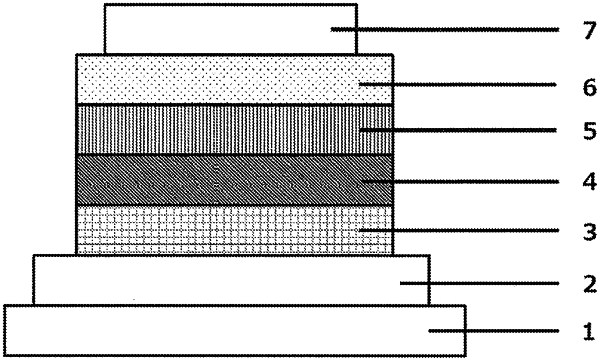| CPC H10K 85/654 (2023.02) [H10K 71/164 (2023.02); H10K 85/626 (2023.02); H10K 85/6572 (2023.02); H10K 85/6574 (2023.02); H10K 85/6576 (2023.02); H10K 50/11 (2023.02); H10K 50/12 (2023.02); H10K 2101/10 (2023.02)] | 8 Claims |

|
1. A melt mixture for an organic electroluminescent device which is a melt mixture of at least two types of organic compounds,
wherein the two types of organic compounds include a first organic compound and a second organic compound,
a difference in vapor deposition temperature between the first organic compound and the second organic compound is 20° C. or less, and
a difference between a maximum emission wavelength of a fluorescence-emitting spectrum of the melt mixture and a maximum emission wavelength of a fluorescence-emitting spectrum of any of the first organic compound and the second organic compound is within ±10 nm,
the first organic compound and the second organic compound are hosts used in a light-emitting layer containing a host and a light-emitting dopant.
|